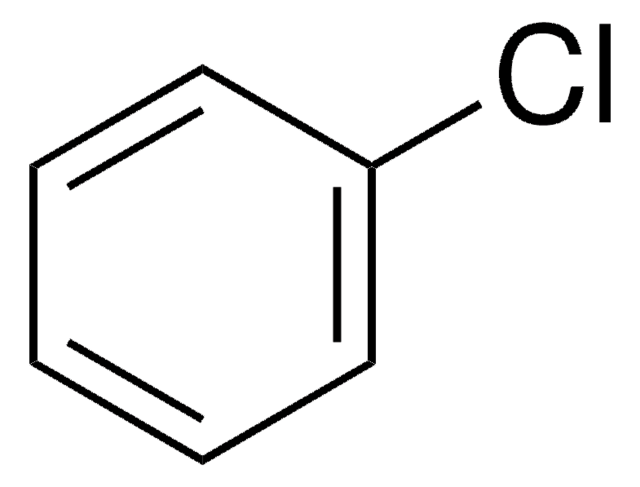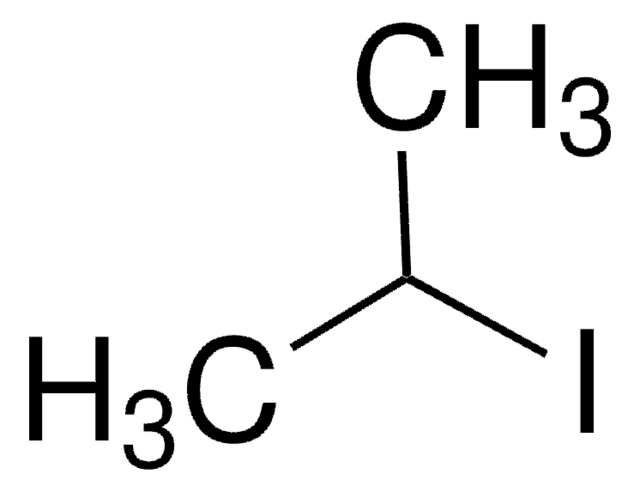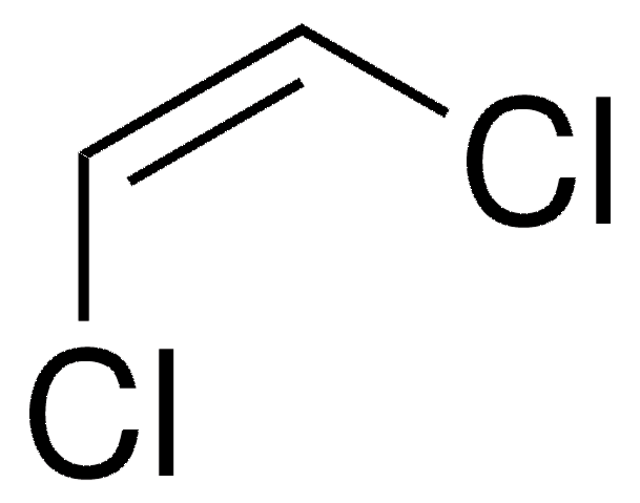Key Documents
372145
Trichloroethylene
anhydrous, contains 40 ppm diisopropylamine as stabilizer, ≥99%
Synonim(y):
TCE, Trichloroethene
About This Item
Polecane produkty
klasa czystości
anhydrous
Poziom jakości
gęstość pary
4.5 (vs air)
ciśnienie pary
61 mmHg ( 20 °C)
Próba
≥99%
Postać
liquid
temp. samozapłonu
770 °F
zawiera
40 ppm diisopropylamine as stabilizer
zanieczyszczenia
<0.002% water
<0.005% water (100 mL pkg)
pozostałość po odparowaniu
<0.0005%
współczynnik refrakcji
n20/D 1.476 (lit.)
tw
86.7 °C (lit.)
mp
−84.8 °C (lit.)
gęstość
1.463 g/mL at 25 °C (lit.)
ciąg SMILES
Cl\C=C(\Cl)Cl
InChI
1S/C2HCl3/c3-1-2(4)5/h1H
Klucz InChI
XSTXAVWGXDQKEL-UHFFFAOYSA-N
Szukasz podobnych produktów? Odwiedź Przewodnik dotyczący porównywania produktów
Opis ogólny
Many methods have been proposed for the mineralization of TCE.
Hasło ostrzegawcze
Danger
Zwroty wskazujące rodzaj zagrożenia
Zwroty wskazujące środki ostrożności
Klasyfikacja zagrożeń
Aquatic Chronic 3 - Carc. 1B - Eye Irrit. 2 - Muta. 2 - Skin Irrit. 2 - Skin Sens. 1 - STOT SE 3
Organy docelowe
Central nervous system
Kod klasy składowania
6.1D - Non-combustible acute toxic Cat.3 / toxic hazardous materials or hazardous materials causing chronic effects
Klasa zagrożenia wodnego (WGK)
WGK 3
Temperatura zapłonu (°F)
closed cup - does not flash
Temperatura zapłonu (°C)
closed cup - does not flash
Środki ochrony indywidualnej
Eyeshields, Gloves, type ABEK (EN14387) respirator filter
Wykazy regulacyjne
Wykazy regulacyjne dotyczą głównie produktów chemicznych. Można w nich podawać ograniczoną liczbę informacji na temat produktów niechemicznych. Brak wpisu oznacza, że żaden ze składników nie znajduje się w wykazie. Użytkownik odpowiada za zagwarantowanie bezpiecznego i zgodnego z prawem stosowania produktu.
EU REACH SVHC Candidate List
EU REACH Annex XVII (Restriction List)
EU REACH Annex XIV (Authorisation List)
Wybierz jedną z najnowszych wersji:
Masz już ten produkt?
Dokumenty związane z niedawno zakupionymi produktami zostały zamieszczone w Bibliotece dokumentów.
Klienci oglądali również te produkty
Nasz zespół naukowców ma doświadczenie we wszystkich obszarach badań, w tym w naukach przyrodniczych, materiałoznawstwie, syntezie chemicznej, chromatografii, analityce i wielu innych dziedzinach.
Skontaktuj się z zespołem ds. pomocy technicznej








